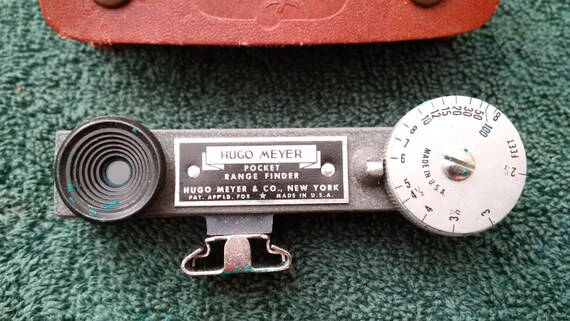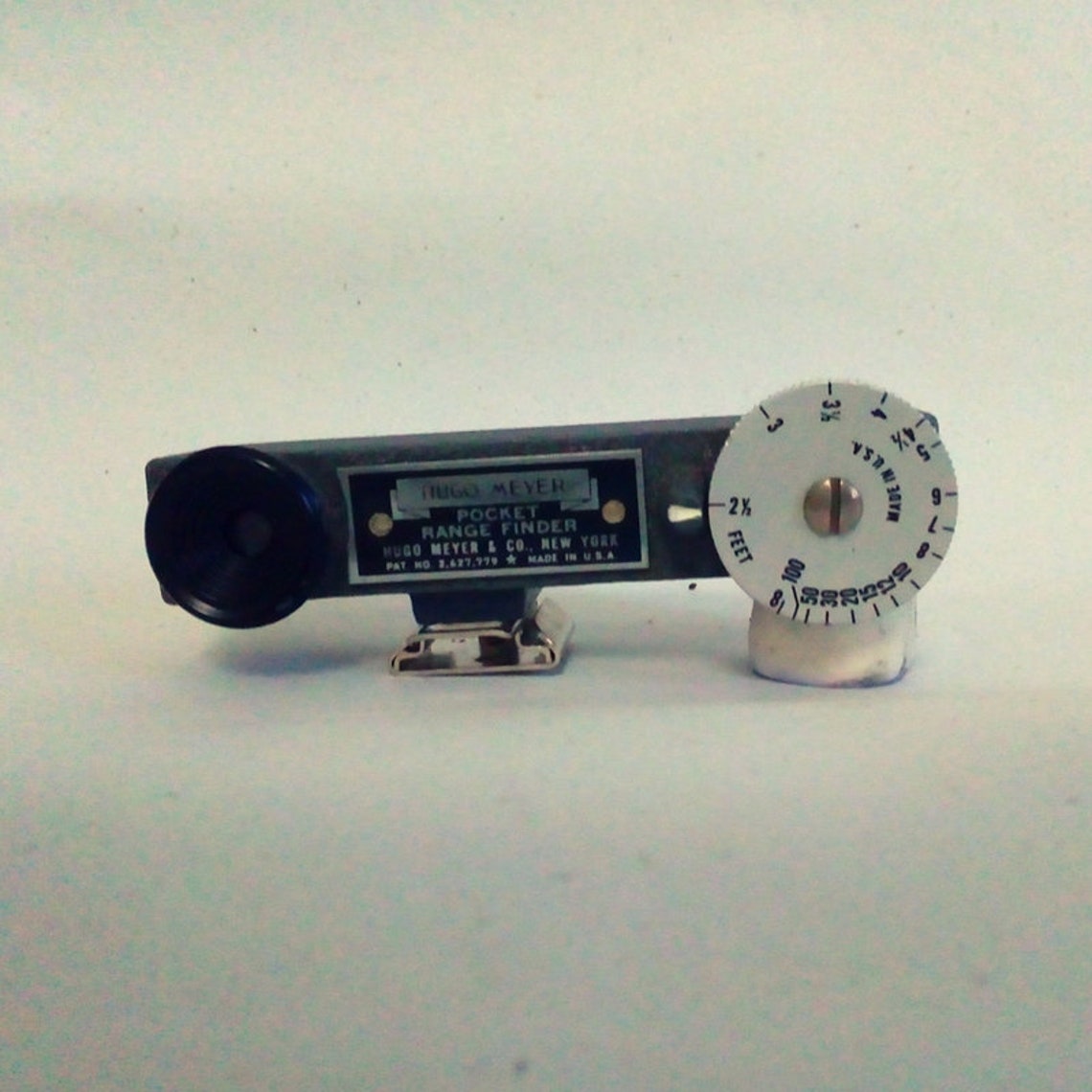
The auxiliary rangefinder I chose to buy is the Watameter Super (shown attached to my Finetta 99). Some common models are the BLIK by Lomo, Hugo Meyer Pocket Range Finder, Walz, Widor, Ideal, Certo Certus, Medis, Pollux, Rowi, Prazisa and Gallus to name quite a few. The top-quality versions are the Leitz Fokos, Kodak Service Rangefinder, Kodak Pocket Rangefinder, Brownie Measure-Rite, AMF, Saymon Brown and the unusual Kuhn Flexameter.

There were dozens of auxiliary rangefinders produced from the 1930s, up to the Fotoman which is produced today in China, however the level of quality and features of these numerous rangefinders vary dramatically. It was quickly realized that adding a separate rangefinder mechanism to a zone focus camera amounted to an affordable and impactful improvement to these hard-to-focus but otherwise excellent machines. For as long as photography has existed there have been accessory companies producing gadgets that solve problems and make life easier. But that doesn’t change the fact that it (and countless other viewfinder and zone focus cameras) isn’t as accurate as a rangefinder camera or SLR.Įnter human ingenuity and the drive for improvement. The Olympus Trip 35, for example, was one of the best-selling cameras of all time, selling more than ten million copies worldwide over a fifteen year period of production. The user would set the distance to subject on the lens barrel and hope for the best.Įven with this limitation taken into account, there were some incredibly good scale focus cameras produced in the mid-20th century. These cameras that featured neither rangefinders nor focusing screens were known as scale focus or zone focus cameras, or viewfinder cameras. However, the issue remains of having to have Tech III cams custom made, which is expensive and time consuming compared to finding standardized Tech V cams.To a generation that has grown up with autofocus lenses and digital LCD screens it may be hard to imagine, but from the birth of photography right up to the 1960s it was very common to own a camera that totally lacked any mechanism to confirm accurate focus. My research indicates the Hugo Meyer and Kalart cannot handle more than 200mm, but the Technika III rangefinder onward can get pretty good accuracy with 360mm and the correct cam. Even the Polaroid 110b conversion I primarily use on a tripod, well stopped down. This is primarily for images requiring great detail rather than a "decisive moment" sort of look. It's the difference between fiddling around for several minutes on a dim screen while the scene and subject change, or locking in and getting the shot relatively quickly. These cameras are meant to be used on a tripod, and the rangefinders are more of a double check to achieve focus quickly, fine tune on the ground glass, and then go. The rangefinder base on the Tech III, IV, V and Master is huge and built to deal with 360mm lenses with a fair degree of accuracy. The 50mm F6.3 makes me hesitate, but I feel the 75mm will compensate well enough.Ī Technika is not a Leica.
#HUGO MEYER POCKET RANGEFINDER UPGRADE#
To upgrade to the Tech V, I would sell my Mamiya Super 23 system (which has the rare Graflok back, Horseman holders, and the 50mm f6.3). There are a few issues with this: can the Tech II accomidate the HUGE Copal 3 of the Arton (my Tech III has problems with it), allow accurate rangefinder focusing, and will it allow use of the 75mm SW Nikkor? Extensive modification sort of will ruin any sort of savings.

The Tech II has a Hugo Meyer Rangefinder, which may make the switch feasible, as I would have the Rangefinder adjusted for the 360mm lens only, as it is most important there. I've considered selling the Tech III and either upgrading to a Tech V, or downgrading to an available Tech II (converted to 4x5 international). The range-finder would need to be accurate at 1 meter, focused on the eyes. I intend to use the Arton for portraits on a Tripod at about 1 meter away, and also for more serious scenes.

Recently, I also acquired the 360mm Tele-Arton, which I've been excited to use in a faster format with the Rangefinder on the Technika III, but having the scales and cams made is cost prohibitive, and I know I could sell the III and upgrade to the V for the cost of having this done.

The 110b is superior for speed and agility on a tripod. I have been using a 4x5 converted Polaroid 110b and Technika III camera in tandem for a few years, but have found that the Tech III is redundant as a Rangefinder camera, and really only useful in ground glass-focusing mode (shifting, tiltig, composing on the ground glass, etc, where the range-finder is really a minor point).


 0 kommentar(er)
0 kommentar(er)
